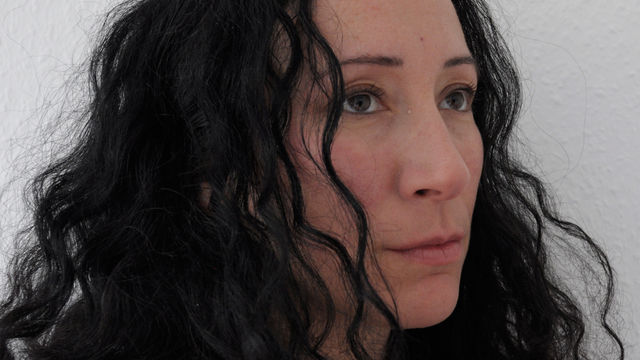
Janet Toro
The performance artist Janet Toro was born in Osorno, Chile, in 1963 and studied fine arts at the Universidad de Chile in Santiago. Toro was a member of the Agrupación de Plásticos Jóvenes, a group of young visual artists who worked in a variety of formats, including graphic arts, installation, and street arts. When Toro began painting in the mid-1980s, Chile was governed by a military dictatorship led by Augusto Pinochet. The oppressive politics of those times affected her on a personal level: her paternal uncle was disappeared by the military, and her father, who had been an activist and had worked for the democratically elected president Salvador Allende, decided to self-exile after his brother's disappearance. Motivated by these events, Toro decided to give up painting and turn her attention to body-based performance art. Her work followed the antidictatorial tone of the art actions carried out by the Chilean collective known as CADA (Colectivo de Acciones de Arte).
Starting in 1986, her performances were usually staged in open urban spaces where passersby were drawn in by her antiestablishment message. Her powerful actions from the 1990s laid bare the consequences of the now-deposed military government, which were not necessarily confined to the past. Before moving to Germany in 1999, Toro completed her most ambitious work, El cuerpo de la memoria (The body of memory). For this work the artist performed ninety actions and installations over a fifty-four-day period at the Museo Nacional de Bellas Artes in Santiago and at nearby sites. At one level this performance centered on the universal issue of human pain but also focused on the subject of torture, which had been carried out in illegal and clandestine jails during Pinochet's dictatorship. If there is one recurring preoccupation in Toro's work, it is her ability to speak about social injustice while addressing the realities of the Chilean people. In 2014, after more than a decade of living in Germany, Toro returned to Chile, where she quickly immersed herself in the performance art scene. Her project In situ (2015)—five performances presented at the Museo de la Memoria y los Derechos Humanos in Santiago—explores topics related to the absence of Mapuche culture, otherness of immigrants, funerary rites, inhabited spaces, and debt.
—Marcela Guerrero
Selected Solo Exhibitions and Performances
1986 Dos preguntas (performance with Claudia Winther), Paseo Ahumada, Santiago
1998 La locura (performance), Centro Experimental Perrera-Arte, Santiago
2001 Perros peleando, Galería Gerda Türke, Dortmund, Germany
2004 Exposición Mácula, Bonifatius Kirche, Dortmund, Germany
2011 Entre líneas, Galería Kunstkontor, Cologne, Germany
Selected Bibliography
Alvear, Lia. "Janet Toro: 'The Performances and the Art Transform the Society, Although It Is by a Second.'" Arte al límite, October 13, 2015. https://www.arteallimite.com/en/2015/10/janet-toro-las-performances-y-el-arte-transforman-la-sociedad-aunque-sea-por-un-segundo.
Ballester Buigues, Irene. "Metáforas extremas frente al dolor y desde el feminismo." Dossiers feministes, no. 16 (2012): 11–18.
"Indígenas, inmigración, deuda, y heridas inspiran performances de Janet Toro." Biobiochile, September 29, 2015. http://www.biobiochile.cl/noticias/2015/09/29/indigenas-inmigracion-deuda-y-heridas-inspiran-performances-de-janet-toro.shtml.
Toro, Janet. El cuerpo de la memoria / The body of memory / Der Körper der Erinnerung. Cologne: Janet Toro, 2012.
Tupper, Sofía. "Janet Toro Benavides, performista: 'La realidad sigue siendo urgente.'" El Mostrador, September 28, 2015. http://www.elmostrador.cl/cultura/2015/09/28/janet-toro-benavides-performista-la-realidad-sigue-siendo-urgente.

